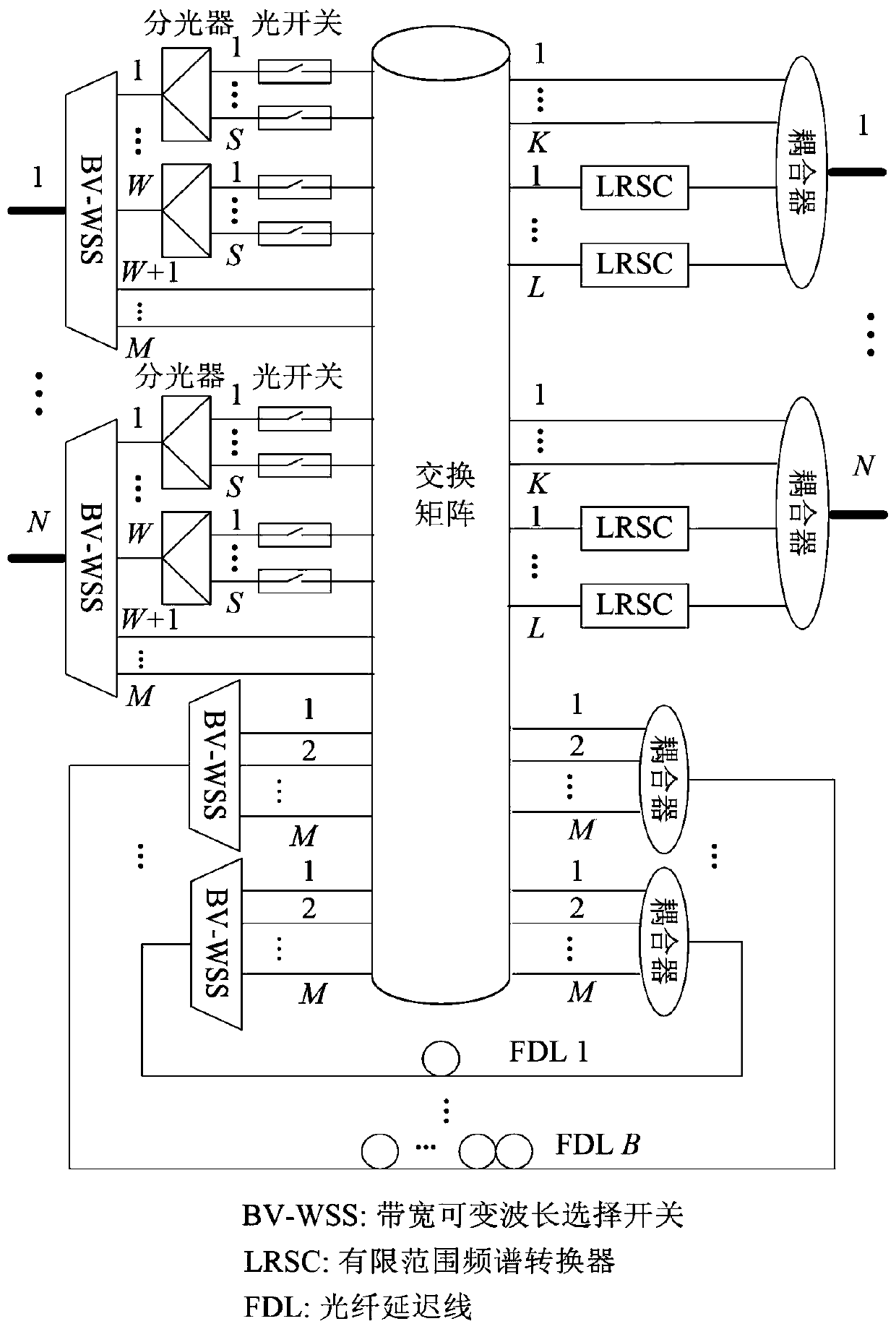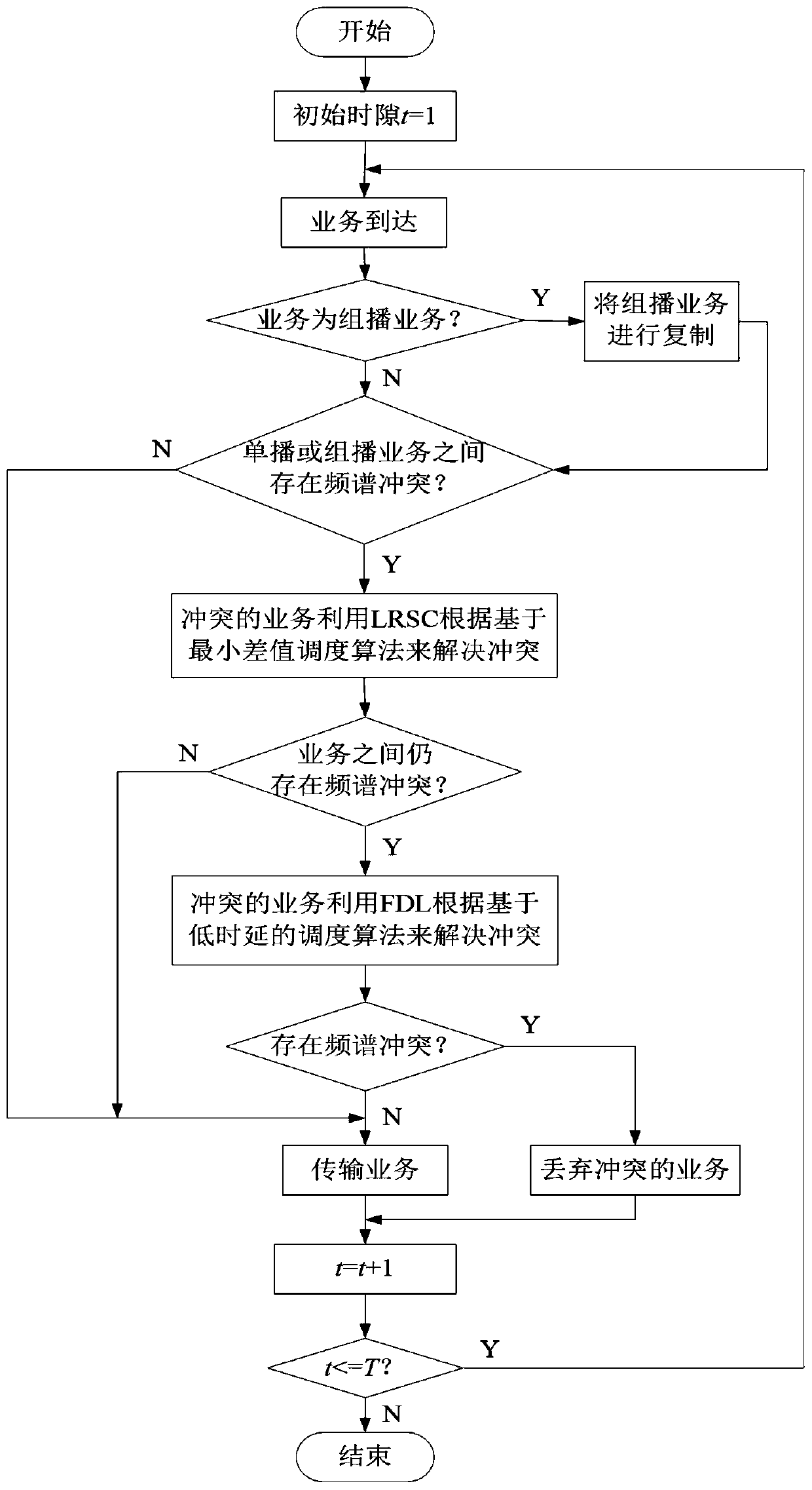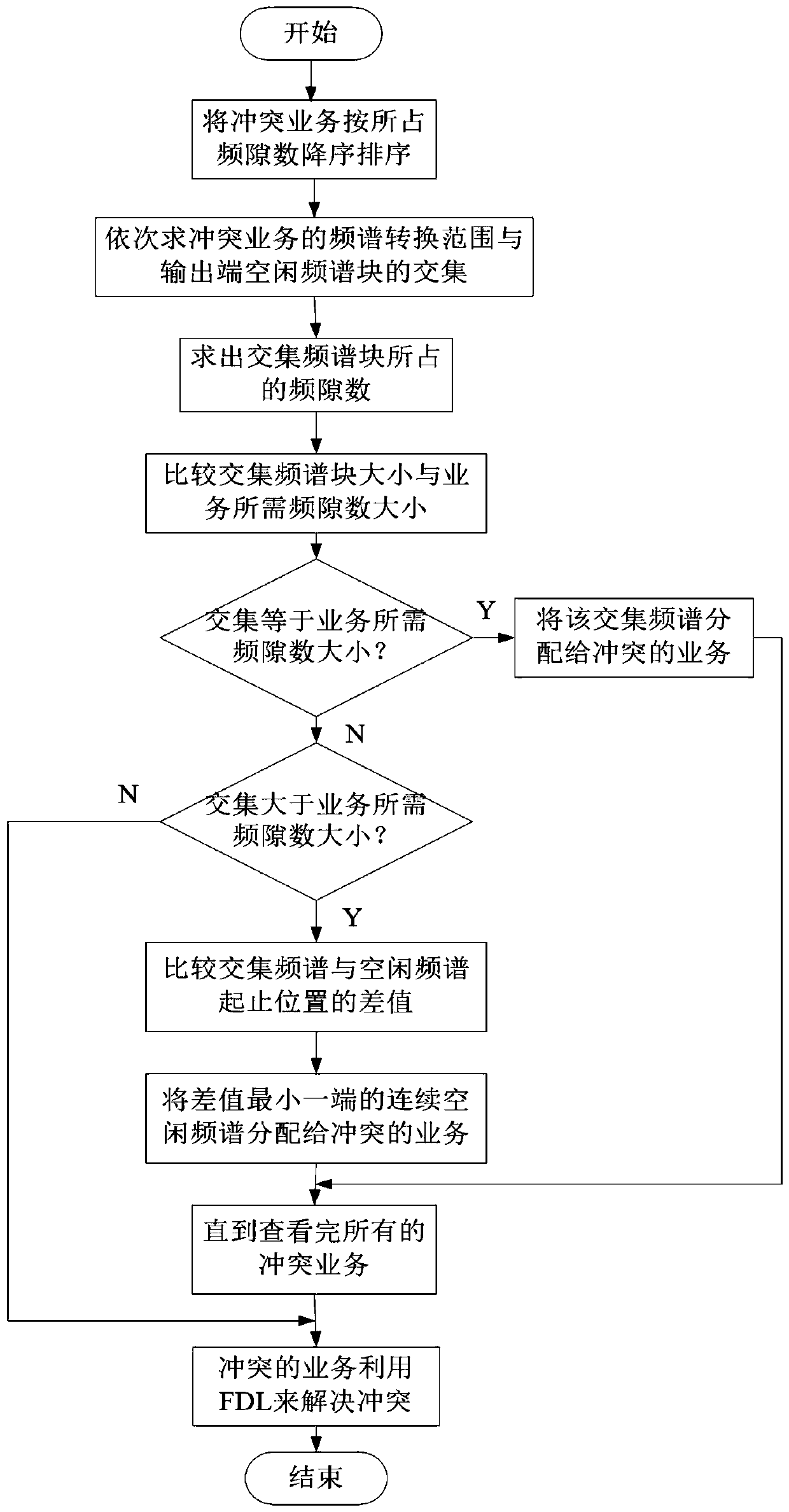Multicast Switch Node Conflict Resolution Method Based on Spectrum Conversion and Optical Buffering Technology
A switching node and conflict resolution technology, applied in the field of multicast switching node conflict resolution, can solve the problems of high network resource occupancy, increased computational complexity, increased transmission delay, etc., to solve spectrum conflicts, reduce scale and complexity , the effect of improving utilization
- Summary
- Abstract
- Description
- Claims
- Application Information
AI Technical Summary
Problems solved by technology
Method used
Image
Examples
Embodiment Construction
[0032] The preferred embodiments of the present invention will be described in detail below with reference to the accompanying drawings.
[0033] Such as figure 1Shown is a flexible optical multicast switching node structure based on the combination of LRSC and FDL, including N input / output ports, N+B 1×M BV-WSS, N×W optical splitters, N×W×S Optical switch, 1 switching matrix, N×L LRSCs, B FDLs and N+B couplers. Among them, LRSC adopts the configuration method of sharing output terminals, and each output terminal shares L LRSCs; FDL adopts the configuration method of feedback sharing, and uses degenerate FDL, that is, adjacent FDLs are sequentially increased with cache granularity D (D is equal to The size of a time slot), then the buffer length that the B-root FDL can provide increases from D to B×D in turn. Each FDL can utilize all the spectrum of the entire optical fiber, and can buffer multiple services that occupy non-overlapping spectrum at the same time. The configur...
PUM
 Login to View More
Login to View More Abstract
Description
Claims
Application Information
 Login to View More
Login to View More - R&D
- Intellectual Property
- Life Sciences
- Materials
- Tech Scout
- Unparalleled Data Quality
- Higher Quality Content
- 60% Fewer Hallucinations
Browse by: Latest US Patents, China's latest patents, Technical Efficacy Thesaurus, Application Domain, Technology Topic, Popular Technical Reports.
© 2025 PatSnap. All rights reserved.Legal|Privacy policy|Modern Slavery Act Transparency Statement|Sitemap|About US| Contact US: help@patsnap.com



